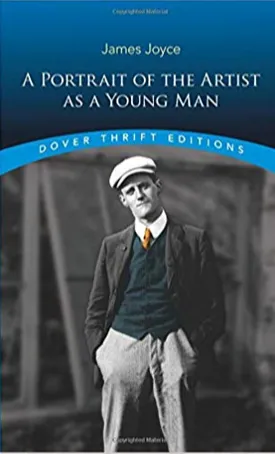A Portrait of the Artist as a Young Man by James Joyce
James Joyce’s “A Portrait of the Artist as a Young Man” is an autobiographical novel that chronicles the life of Stephen Dedalus, an artist struggling to find his role in a conservative, Catholic country. It was written between 1904 and 1906 and was published in book form in 1916.
The story follows Stephen’s coming-of-age journey as he grapples with religion, sin, language, and identity. As the narrative unfolds, Stephen struggles to differentiate himself from his peers, family, and society as a whole. He is gradually exposed to literature, art, and ideas that challenge his Catholic upbringing and leads him closer to a form of modernism.
The novel opens with Stephen in early childhood as he attends a Catholic school in Ireland. Unfortunately, due to religious and cultural constraints, Stephen is unable to truly express his creative and independent nature. Nevertheless, Stephen persists in his quest for individuality and eventually discovers authors such as Shakespeare and Voltaire. These literary figures inspire him to think beyond his generally accepted beliefs.
Stephen’s awakening of independent thought is further complicated by his view of the Church and its teachings. Driven by his desire for self-expression, Stephen decides to pursue a life of writing, but is discouraged by the lack of support from his family and peers. He is eventually expelled from school and begins university, where he also experiences difficulty fitting in. Despite this, Stephen is determined to express himself.
The climax of the novel comes when Stephen makes his rebellious decision to become an artist—defined as exclusively by his own individual standards. This decision signifies a rejection of the traditions and beliefs set out by the Church and his family. His subsequent revamp in identity headlines the remaining chapters of the book.
The book ends on a positive note, as Stephen sees himself as an artist. He views himself as an individual instead of a servant of the Church. He is has decided to abandon the traditional aspects of his Catholic faith, in favor of his own personal artistic view of the world.
Through “A Portrait of the Artist as a Young Man”, James Joyce conveys the importance of personal and intellectual growth in the formation of one’s identity. In most of his works, Joyce often tackles controversial topics such as religion, politics, and art—all of which are reflected in this novel. In “A Portrait of the Artist as a Young Man”, Joyce creates a compelling character in Stephen Dedalus and follows him as he evolves and finally decides on his own unique view of the world. The timeless themes and joyous moments found in this novel, offer readers a captivating journey of personal discovery. It is sure to capture the attention of any reader, young and old.

